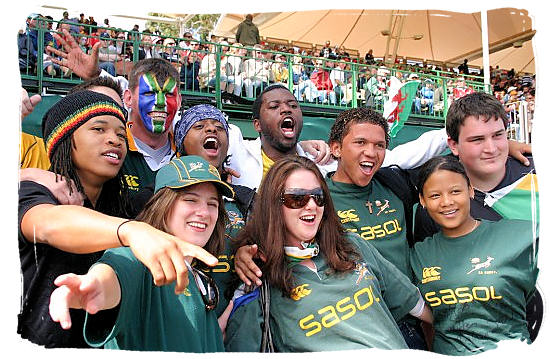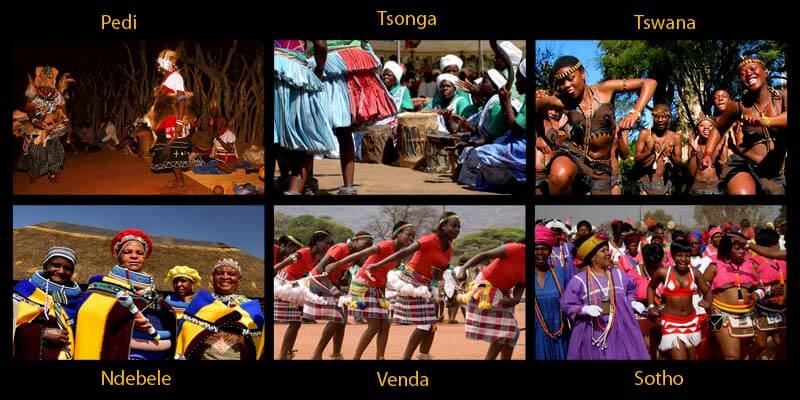The Single Strategy To Use For South African Culture Today
The Single Strategy To Use For South African Culture Today
Blog Article
The 9-Minute Rule for South African Culture Today
Table of ContentsAbout South African Culture TodayThe Basic Principles Of South African Culture Today South African Culture Today for BeginnersThe South African Culture Today IdeasSouth African Culture Today Can Be Fun For EveryoneThe 5-Second Trick For South African Culture Today
This adheres to with vocal singing and drum beating. The new bride and groom after that consult with the seniors and chat concerning the importance of their union. A matter of value in Zambian villages is the diing of enjoyed ones. All members of the village placed money, effort and time together for the burial of the deceased.Music and dance is a really important aspect of the Zambian society. The different tribal systems have their own dancing kinds; nevertheless, makishi is typical amongst all tribes.
Some Known Details About South African Culture Today
When it pertains to songs, drums are made use of the most, with a selection of drumming ceremonies. In Zambia, bulk of the individuals are Christian; Protestant and Roman Catholic. There are little groups of Muslims and Hindus, with the rest adhering to regional indigenous tribal beliefs.

South African heritage and society is exceptionally varied, and is composed of several teams of people who each have their very own traditions and beliefs. Having such a variety of people and societies is what makes South Africa so special. In the real feeling of the expression, we are a rainbow country.
Making it the 7th on the checklist of nations with the most Portuguese individuals in it outside of Portugal. Portuguese is not only a culture, however it is likewise a language and a nationality. Portuguese people originate from the country of Portugal in Europe, however, due to Portugal (like numerous various other countries in Europe) exploring the globe and overcoming other nations throughout the 15th 20th centuries, South Africa has what we call Portuguese South African's living in it.
All About South African Culture Today
Among the prominent functions of the topography is a plateau that covers virtually 2 thirds of the facility of the nation. The plateau complex climbs toward the southeast, where it climaxes in the Drakensberg variety, part of an escarpment that divides the plateau from the coastal areas. The Drakensburg includes Sparkling wine Castle, the highest peak in the country.
The area north of the Witwatersrand, called the bushveld, inclines downward from eastern to west towards the Limpopo River, which develops the worldwide border. The western section of the plateau, the middleveld, likewise descends towards the west and varies in elevation in between the highveld and bushveld. Between the Drakensburg and the eastern and southerly coastline, the land comes down to the sea.
Nearer the coastline there is a low-lying level called the eastern lowveld. Southwest of the plateau the country becomes gradually more dry, giving way to the hostile desert of the Great Karroo, bordered on the east by the reduced, better watered plateau of the Little Karroo. Dividing the dry southern inside from the sandy littoral of the southerly coast and West Cape is another array, the Langeberg.
6 Simple Techniques For South African Culture Today
The country's racially, ethnically, and politically divided background has produced national and subnational symbols that still work as signs of the country, and others symbols that are approved just by certain groups. The monuments to white inhabitant conquest and political supremacy, such as the Afrikaner Voortrekker ("pioneer") Monolith in Pretoria and the Rhodes Monolith honoring the British colonial empire builder and Cape prime preacher Cecil Rhodes, remain sectarian symbols.
The very first contemporary occupants were the San ("bushman") hunter-gatherers and the Khoi ("Hottentot") peoples, that herded animals (South African culture today). The San Get the facts might have existed for countless years and left evidence of their presence in hundreds of ancient cavern paints ("rock art"). Bantu-speaking clans that were the forefathers of the Nguni (today's amaZulu, amaXhosa, amaSwazi, and vaTsonga peoples) and Tswana-Sotho language groups (today's Batswana and Southern and Northern Basotho) moved down from eastern Africa as very early as the fifteenth century

Both previous republics of the Orange Free State and Transvaal (South African Republic) were established by Afrikaner settlers that beat and dispossessed the Basotho and Batswana. Lesotho would have been by force incorporated right into the Orange Free State without the expansion of British security in 1869. The ultimate marriage of the country resulted from the South African Battle (18991902) in between the British you can look here and both Afrikaner republics, which decreased the country to ruin at the beginning of the twentieth century.
Afrikaners traditionally considered themselves the only real South Africans and, while giving complete citizenship to all homeowners of European descent, rejected that status to people of color up until the democratic shift of 1994. British South Africans retain a feeling of cultural and social connection to Great Britain without compromising their identity as South Africans.
South African Culture Today - Questions
The diversity and fragmentation within ethnic collections and the equilibrium of stress between those teams find more during the twentieth century prevented interethnic civil problem. While intergroup stress over sources, privileges, and political prominence remain, those conflicts are as most likely to match Zulu versus Zulu as Zulu versus Xhosa or African against Afrikaner.
From colonial India, British sellers and managers brought the rounded metal ornamental roofs and slim lace job pillars that still epitomize the outdoor patios of homes arounds and cities throughout the nation. Holy places add an essential architectural facet even in the tiniest communities. Along with the skyrocketing steeples and classic stonework of Afrikaans Dutch Reformed churches, Anglican churches, synagogues, mosques, and Hindu shrines provide selection to the religious architectural scene.

Slaughtering and the brewing of standard grain beer are important in securing the engagement and a good reputation of the ancestors that are considered the guardians of good luck, prosperity, and health. Indian communities keep their indigenous culinary practices and apply them on Islamic and Hindu ritual and ceremonial events. Afrikaners and Coloured people gather at weekend breaks and special events at multifamily barbeques called braais, where area bonds are strengthened.
Because this was the main economic enterprise of both black Africans and white homesteaders, dispute in between those groups centered on the ownership of grazing land and animals. In 1867, the largest diamond deposits worldwide were found at Kimberley in the west central location. The riches from those areas assisted finance the exploitation of the best gold reef worldwide, which was discovered on the Witwatersrand in 1886.
The Basic Principles Of South African Culture Today
This caused misconceptions and intentional misstatement in the ventures of white inhabitants and government officials with African chiefs during the early american period (South African culture today). In the establishment of African books, some aspects of communal and mainly "tribal trust" land tenure were maintained, and even in white backwoods, kinds of communal period were still exercised in areas with African neighborhoods
After the autonomous improvement of 1994, programs for land restitution, redistribution, and reform were instituted, however development has actually been slow. The white minority still regulates eighty percent of the land. In the wake of agricultural land intrusions in Zimbabwe, the Department of Land Matters has actually pledged to speed land redistribution.
Report this page